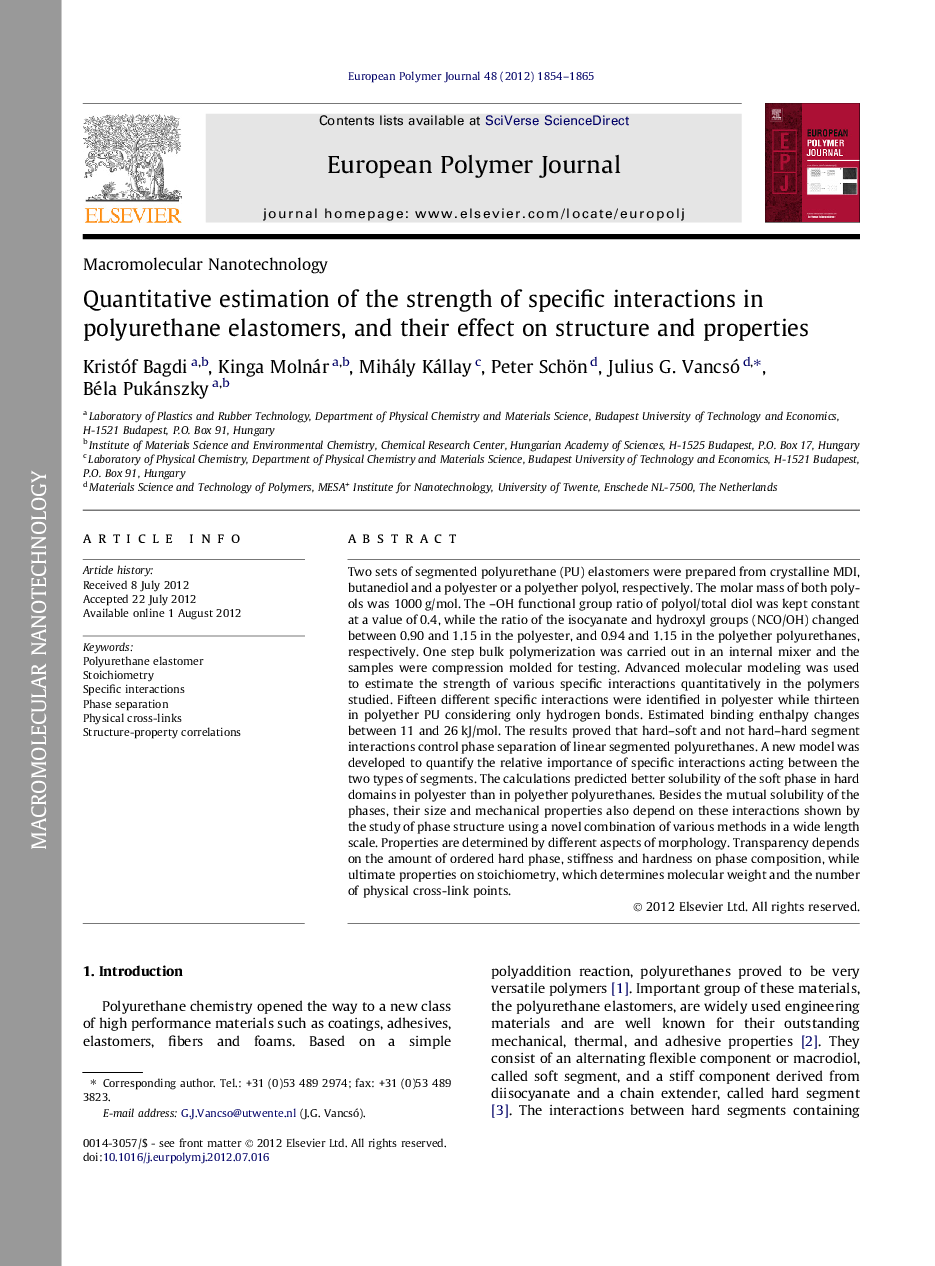| Article ID | Journal | Published Year | Pages | File Type |
|---|---|---|---|---|
| 1400463 | European Polymer Journal | 2012 | 12 Pages |
Two sets of segmented polyurethane (PU) elastomers were prepared from crystalline MDI, butanediol and a polyester or a polyether polyol, respectively. The molar mass of both polyols was 1000 g/mol. The –OH functional group ratio of polyol/total diol was kept constant at a value of 0.4, while the ratio of the isocyanate and hydroxyl groups (NCO/OH) changed between 0.90 and 1.15 in the polyester, and 0.94 and 1.15 in the polyether polyurethanes, respectively. One step bulk polymerization was carried out in an internal mixer and the samples were compression molded for testing. Advanced molecular modeling was used to estimate the strength of various specific interactions quantitatively in the polymers studied. Fifteen different specific interactions were identified in polyester while thirteen in polyether PU considering only hydrogen bonds. Estimated binding enthalpy changes between 11 and 26 kJ/mol. The results proved that hard–soft and not hard–hard segment interactions control phase separation of linear segmented polyurethanes. A new model was developed to quantify the relative importance of specific interactions acting between the two types of segments. The calculations predicted better solubility of the soft phase in hard domains in polyester than in polyether polyurethanes. Besides the mutual solubility of the phases, their size and mechanical properties also depend on these interactions shown by the study of phase structure using a novel combination of various methods in a wide length scale. Properties are determined by different aspects of morphology. Transparency depends on the amount of ordered hard phase, stiffness and hardness on phase composition, while ultimate properties on stoichiometry, which determines molecular weight and the number of physical cross-link points.
Graphical abstractFigure optionsDownload full-size imageDownload as PowerPoint slideHighlights► In linear segmented polyurethanes hard–soft and not hard–hard interactions control phase separation. ► A model was introduced to quantify the relative importance of specific interactions acting between the two types of segments. ► Properties are determined by different aspects of morphology.
